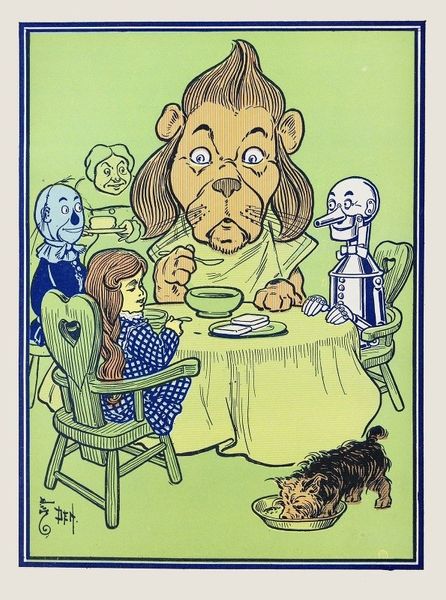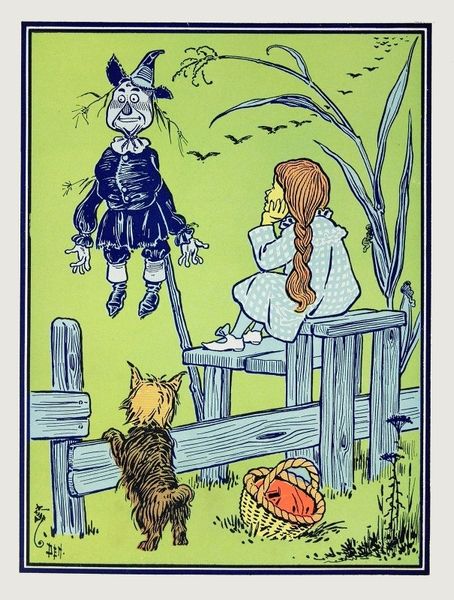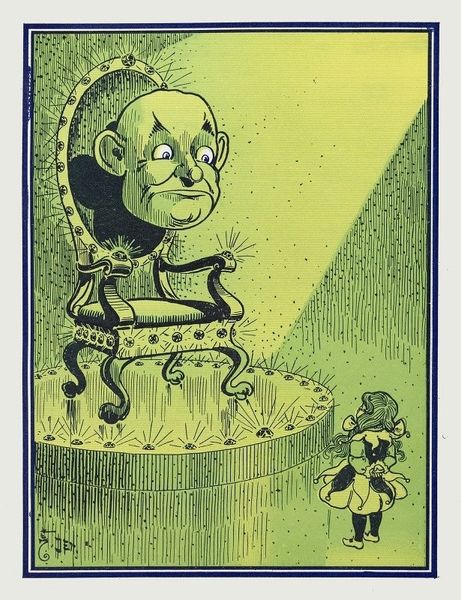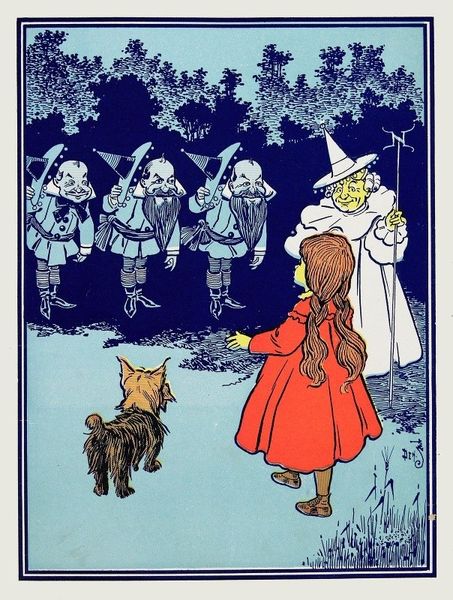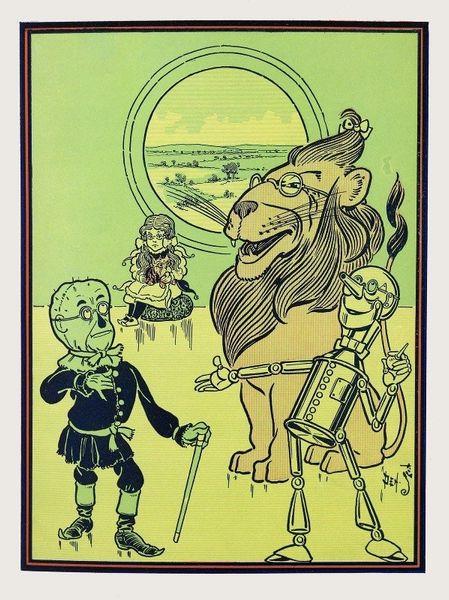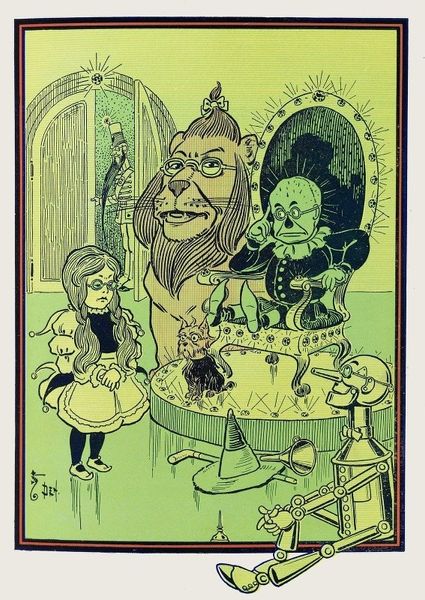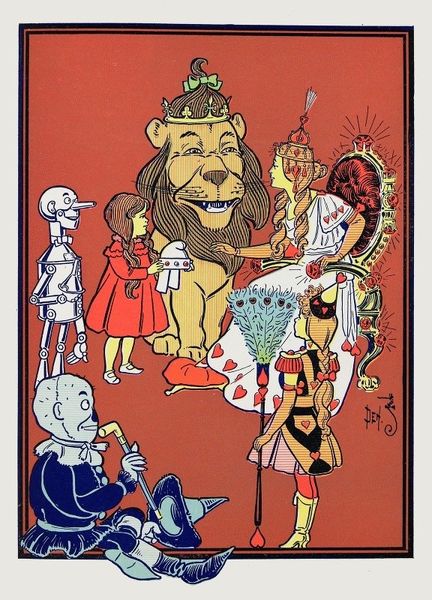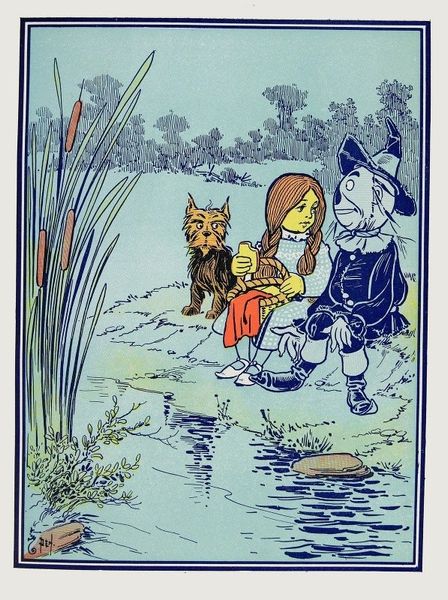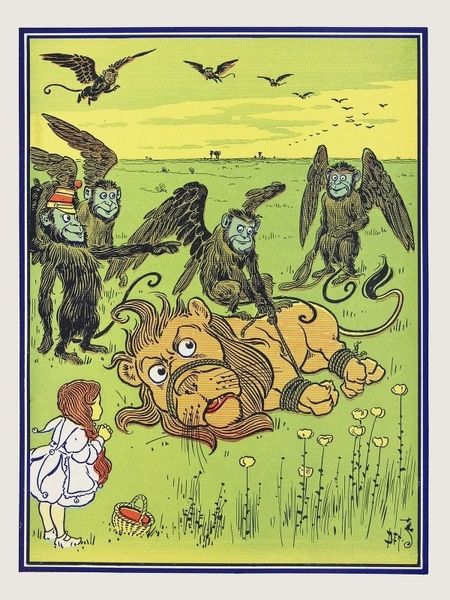
Copyright: Public Domain: Artvee
William Wallace Denslow created "The Tinsmiths worked for three days and four nights," illustrating a scene of diligent craftsmanship. Note the heart-shaped motif recurring throughout the image, adorning tools and components with a symbolic center. The heart, universally recognized, evokes love, compassion, and courage. It transcends cultures, appearing in ancient Egyptian hieroglyphs to medieval heraldry. Consider its transformation: initially representing the physical heart, it evolved to symbolize emotional depth. In medieval times, the heart symbolized courtly love and devotion. As the Renaissance dawned, its depiction in art signaled humanism. Here, in Denslow's illustration, it echoes childhood tales where characters discover their own hearts. The symbol's endurance reminds us that human emotions are an ever-present, powerful force, engaging viewers on a profound, almost subconscious level. The heart's emotional resonance has resurfaced, evolved, and adapted to new meanings across diverse historical contexts.
Comments
No comments
Be the first to comment and join the conversation on the ultimate creative platform.
